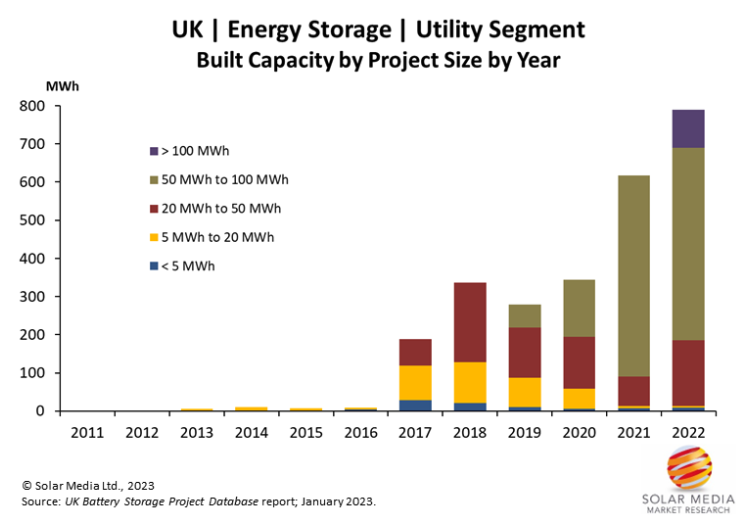Energy is neither created nor destroyed, it is transformed… This sentence sums up the principle of energy conservation and you have surely heard it more than once. When we talk about electricity generation and renewable energies, the question almost always arises: why don’t we store unused energy for future use? Well, that’s a good question, but it’s not always possible. Or not exactly. Energy sources such as fossil fuels and gas can be stored as physical elements. But electrical energy cannot be stored as such.
In this article we will discuss the evolution of energy storage today, projects underway to accelerate these technologies and how they can be useful for a state’s critical infrastructure.
Energy Storage: Main Technologies
Energy storage is key to guaranteeing the security and stability of supply. Currently, storage is the main challenge for renewable energies. This is because renewables depend on external climatic factors that cannot be controlled. Therefore, when renewable energies generate surplus energy, the ability to store this extra energy and use it at times of low production or at night would be a further step towards energy efficiency and energy use.
The aim is to be able to store this energy already generated and use it at times of lower generation. In this context, some technologies exist but the cost is high, or the cheapest ones cannot store large quantities. They exist on a large scale (in GW or MW), such as pumped hydro, thermal storage or compressed air. Hydropower plants are the most widespread of these options.
In this article, we focus on two of the most talked-about technologies: storage batteries and hydrogen.
- Batteries. Batteries are the best-known storage systems, based on chemical compounds. Lithium batteries are the most popular, as this material has large storage capacities, although they are not the only ones. At the user level, they are very widespread. Indeed, we are all familiar with batteries such as portable batteries or power banks, or the batteries of devices that last for a certain amount of time. On this scale, we usually speak of kWh. They also exist on a larger scale but have yet to evolve to be used for high-energy loads. Their development, among other areas also for electric vehicles, has brought prices down rapidly, but research is still underway on how to increase their durability and make them smaller, among other things.
- Hydrogen. Hydrogen is not a storage technology per se, but it is an easily storable energy. It is already widely used in industry and transport when generated from fossil fuels, so-called grey hydrogen. In recent decades, other techniques for generating hydrogen have emerged, each identified with a colour according to its origin and emissions. Blue hydrogen was developed as a less polluting modality as it includes processes to capture emissions. Meanwhile, green hydrogen, from renewable sources that do not generate CO2 through electrolysis, is advancing rapidly. Although it has been recognised as an option towards decarbonisation and emissions reduction, its high cost acts as a barrier to its use.
Energy Storage: Focus on the UK
The UK has been working to develop and implement energy storage technology to help achieve its goal of reducing greenhouse gas emissions and transitioning to a low-carbon economy.
During 2022, the operational capacity of energy storage sites in the UK increased by almost 800MWh, the largest annual deployment figure so far. The UK’s energy storage deployment had the highest annual installed capacity in 2022 at 569MW/789 MWh. The graphic above shows the built capacity of energy storage in the UK by project size by year where 2022 deployment levels exceeded the 2021 annual installed capacity of 617MWh.
A month ago, Harmony Energy Income Trust Plc inaugurated the largest battery energy storage system in Europe, costing £75m, in the UK. By reducing the need for wind farms to be curtailed due to supply and demand imbalances or network limitations, the energy storage facility operated by the company maximises its efficiency. This system will provide crucial balancing services to the country’s electricity grid and support the faster transition from fossil fuels to renewable energy sources.
Storing excess renewable energy through technologies such as batteries, pumped hydro, flywheels, thermal storage or compressed air energy storage can help balance the grid and ensure a reliable and stable supply of electricity. As the technology continues to develop, we can expect to see even more innovative energy storage solutions being deployed in the UK and around the world. Flexible technologies will form part of the UK’s smarter electricity grid, supporting the integration of more low-carbon power, heat and transport technologies, which it is estimated could save the UK energy system up to $60 billion by 2050.
What are Critical Infrastructures?
Critical infrastructures are the structures necessary for a state to be in operation, guaranteeing the security and well-being of its citizens. Critical infrastructures have complex management behind them and require planning and constant preparation to maintain.
Indeed, these infrastructures require special attention to ensure their operation even in unusual times: in a time of conflict, pandemic, earthquake, etc. Their power supply, and the security of people and data, for example, are key areas.
Critical Infrastructures in the UK
The UK has a range of critical infrastructures (also called Critical National Infrastructures (CNI), which are vital for maintaining the country’s stability and prosperity. They include:
- Energy:
The UK’s energy infrastructure includes power plants, oil and gas pipelines, and electricity transmission networks. The country is dependent on energy imports to meet its energy needs, and disruptions to the energy infrastructure can have severe economic and social consequences. - Transportation:
It refers to roads, railways, airports, and ports. The efficient functioning of this infrastructure is essential for the movement of goods and people within the country and for international trade. - Communications:
The UK’s communications infrastructure includes telecommunications networks, internet service providers, and data centers. This infrastructure is vital for the running of businesses and government agencies, as well as for the communication and dissemination of information. - Water:
It comprises water treatment plants, reservoirs, and distribution networks, essential for providing clean water to the population and for supporting agriculture and industry. - Healthcare:
The UK’s healthcare infrastructure includes hospitals, clinics, and research facilities. This infrastructure is critical for providing healthcare services to the population, conducting medical research, and developing new treatments and vaccines. - Financial:
Banks, stock exchanges, and payment systems are essential for the functioning of the country’s economy, as well as for international finance and trade. - Emergency services:
The UK’s emergency services infrastructure includes police, fire, and ambulance services, critical for responding to emergencies and maintaining public safety and security.
As you have understood, these CNI are a vital part of the UK’s economic, social, and security systems. The disruption or failure of these infrastructures can have severe consequences for the country and its people, which is why it’s crucial to ensure their proper functioning.
💡 Did you know? In the United Kingdom, the National Protective Security Authority (NPSA) protects national security by providing advice to the organisations that make up the country’s national infrastructure covering physical, personnel and cyber security.
Critical Infrastructures Energy Storage
In this phase towards the digitalisation of services and the energy transition, we wonder how critical infrastructures will also approach renewable energies and the importance of storage.
While fossil energy sources will continue to be used to secure supply from a variety of sources, this sector cannot remain oblivious to the energy transition and must be prepared.
With a large part of these services relying on electricity, securing the energy supply of services is more than necessary. Thus, the development of higher-capacity batteries, which can exist directly in key areas and buildings in cities, is a step in the right direction.
Generators already exist to serve as backups, for example, if there is a power outage. These generators are small power plants that generate electricity from gas or diesel. They are usually located in the buildings themselves, in protected areas that are inaccessible to the general public.
Let’s put ourselves in the situation. Imagine a hospital in a time of general power failure, during a storm for example. Guaranteeing the supply of minimum services is essential at such times so that the control machines or operating theatres can cover essential services. This can be both emergency services and the storage of medicines at low temperatures, or of analytical tests.
In the event of a power failure, generators would automatically start up to ensure continuity of supply until the main grid is restored. These existing generators already meet these needs, but they do so with fossil fuels. Improved battery capacity for storing electrical energy could change this. But until batteries are reliable and of high capacity, these sectors will continue to rely on their existing generators.
As you can see, the evolution of storage is expected from many sectors. Critical infrastructures aim to maintain supply rather than energy efficiency, but this does not mean that they are neglecting it. Overall, energy storage is becoming an increasingly important component of critical energy infrastructure. By providing backup power, supporting renewable energy integration, providing emergency power, and reducing greenhouse gas emissions, energy storage technologies are helping to ensure the stability and reliability of the energy grid and support the transition to a low-carbon economy.
To monitor all this energy, to see that the equipment is working and that the energy consumption is correct, the Dexma Platform serves as a common point to centralise all this information. If you are in charge of the maintenance of these critical infrastructures and want to know more about the Dexma energy management solution, do not hesitate to contact us.





